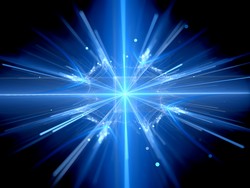Robust partnership advances hadron physics
Inside each atom's nucleus, protons and neutrons are not alone; many strongly interacting particles – called quarks – are swirling. Quarks are not just bits of hadrons, bits with fractional electric charge. They have their own uniquely defining property, colour. Quarks have colour, but hadrons are colour neutral, like the electrically neutral atoms built of their electrically charged constituents. The properties of hadrons in vacuum are today known thanks to experimental measurements and theoretical studies. What, however, happens if they are found in a hot and dense environment is still a matter of ongoing research. This question was also the focus of the EU-funded project HADRONPHYSICS3(opens in new window) (Study of strongly interacting matter). This new endeavour harnessed the momentum of a research initiative launched in January 2004 with the very first HADRONPHYSICS project. Two projects later, the aim was still to hone the cutting-edge of five key research facilities in Europe, including the Cooler Synchrotron (COSY) and the Mainz Microtron (MAMI) located in Germany. In addition, networking activities were designed to facilitate the cooperation between experimentalists and theoreticians. They jointly studied the structure of nucleons and characteristics of quark-gluon plasma in the framework of the fundamental theory of strong interaction, quantum chromodynamics. For this purpose, new computational techniques were developed. To boost the community's discovery potential, a series of joint research activities were initiated to look into technological aspects of present and future experiments. These activities resulted in the development of high-performance detectors, the design of polarised and unpolarised beams, and a refinement of data analysis techniques. The motivation behind HADRONPHYSICS3 work was the planned construction of the Facility for Antiproton and Ion Research (FAIR) in Germany. This innovative accelerator will be equipped to perform forefront research into hadron and nuclear physics. Importantly, European leadership in these fields is guaranteed for the next generation of scientists.



